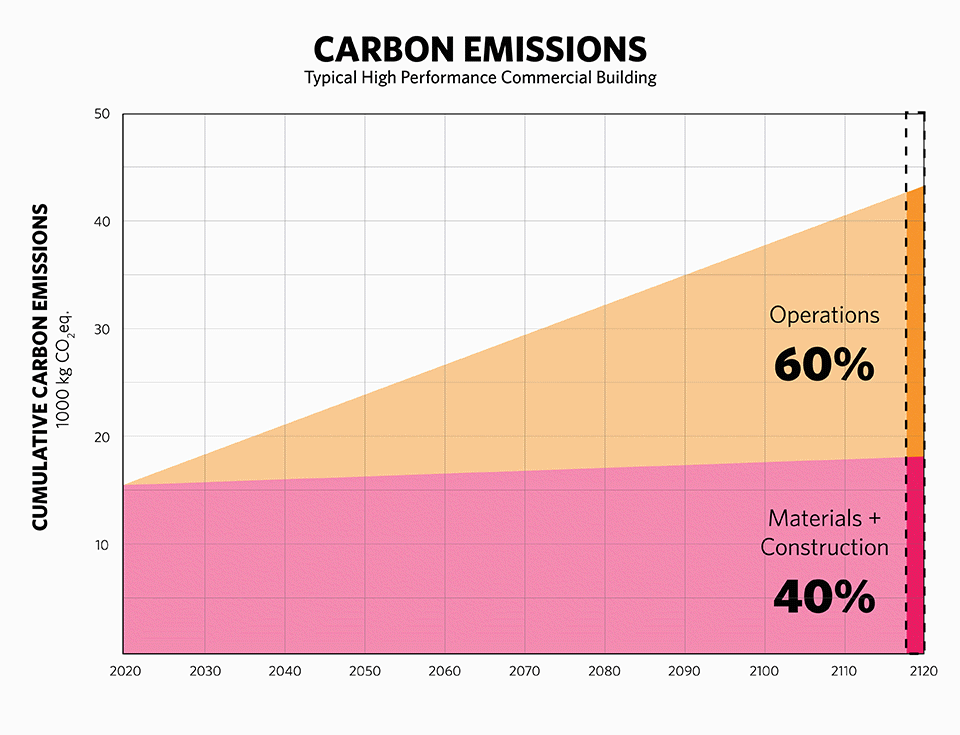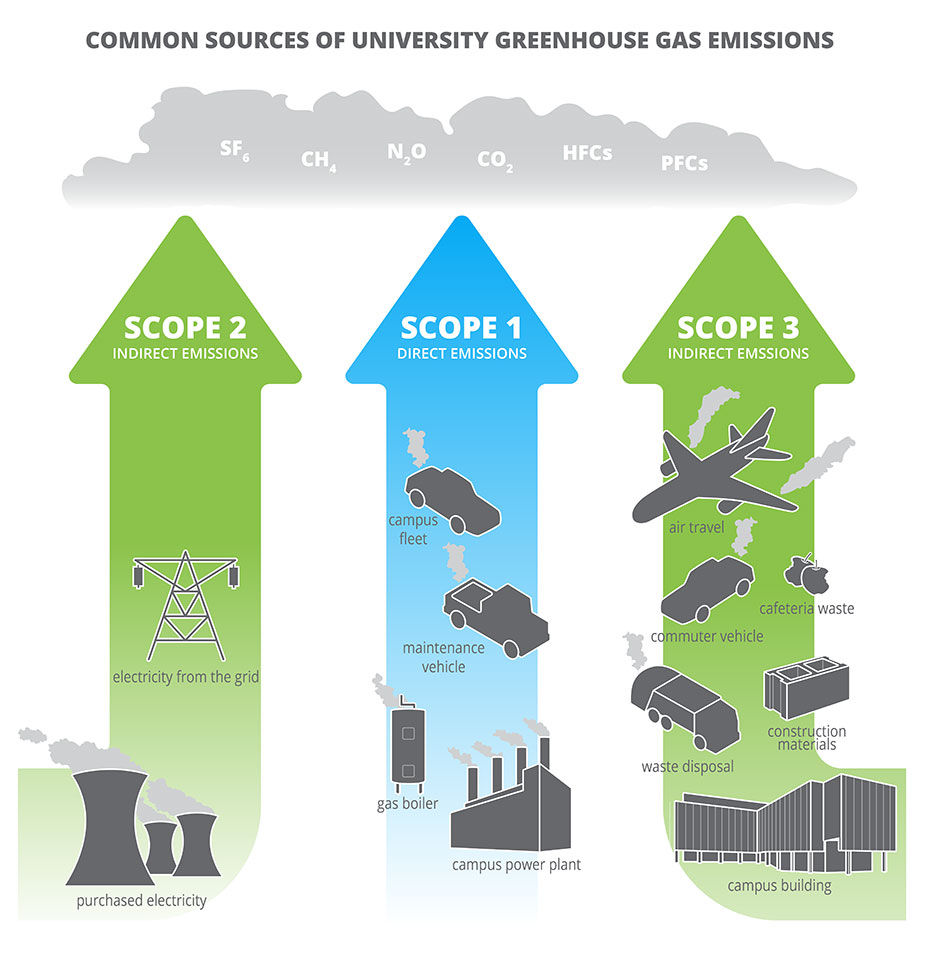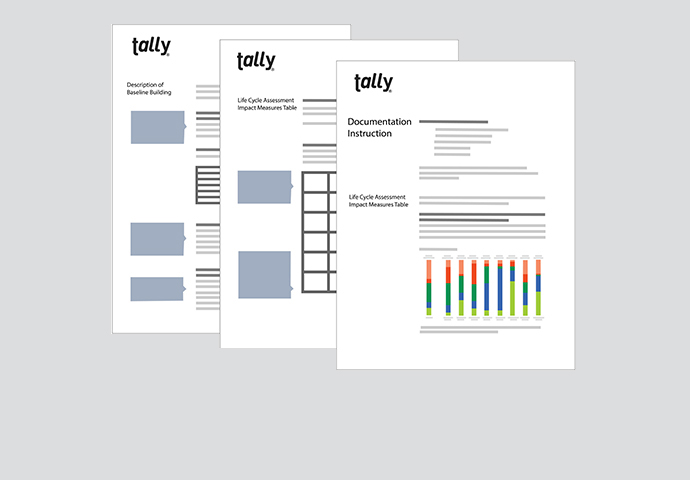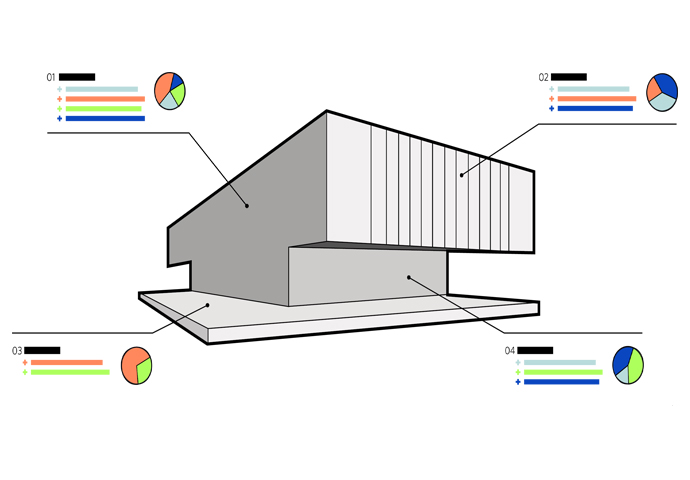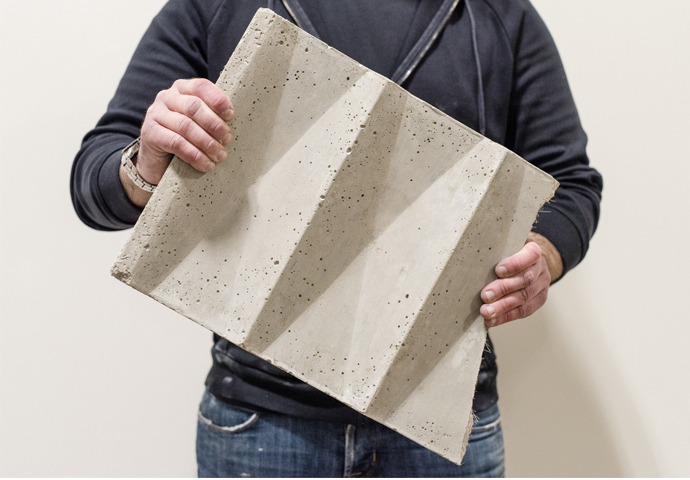Climate change is our generation's greatest design challenge. Currently, urban environments are responsible for nearly 75% of all global carbon emissions. Between material manufacturing, cement production, land transformation, and direct combustion of fossil fuels, buildings consume nearly half of all energy in the US and are responsible for nearly half of all global warming emissions. If we are to avoid the most dire of climate change predictions, we must find ways for our industry to dramatically reduce the carbon emissions associated with architecture and construction. The next 30 years are particularly critical for reducing carbon emissions and meeting, if not exceeding, national and international targets. Architects, engineers and builders have the chance to play a leading role in the fight to reduce our emissions and transform our professional practice.
While operational carbon, or the emissions associated with energy and fuel use, can be addressed through a focus on energy efficiency and a shift towards low-carbon energy sources, the carbon emissions associated with building materials and construction, also known as embodied carbon, are especially challenging in that they are often overlooked and are more difficult to track. However, with global building stock expected to double by 2050, embodied carbon will soon be responsible for more global emissions than the carbon associated with operating a building.
By 2050, emissions from embodied carbon will be more than four times higher than emissions from operational energy. In order to meet our emissions goals within the next 30 years, architects need to rethink our approach to embodied carbon.
KieranTimberlake is committed to reducing carbon footprints both in our own projects and across the architecture industry. We help our clients understand and reduce their buildings' total greenhouse gas contributions, including contributions from both operational carbon emissions and embodied carbon. Additionally, we work with our clients to emphasize how tracking their embodied carbon is an essential component of their carbon action plans, and how reducing the embodied carbon of their projects can support their broader sustainability and carbon reduction goals.
We do this by running Life Cycle Assessments (LCA) on each of our projects. LCA is a method for rigorously tracking the embodied carbon associated with materials and construction processes across a building's full life cycle, from material extraction and manufacturing through construction, use, and eventually demolition. To conduct these LCAs, our firm uses a suite of tools including Tally, a software specifically tailored to the building industry that was developed by our affiliate company, KT Innovations. These tools give us the ability to rapidly evaluate and compare the embodied carbon contained in different building materials during design. They also help us find opportunities for strategic carbon reduction at no additional cost.
We see every project as an opportunity for reducing carbon emissions and better understanding material sourcing and environmental impacts over a building's full life. But in addition to our built work, we are committed to supporting research and education on embodied carbon and LCA. As a leader in LCA methods and practice, we are active participants in the Carbon Leadership Forum, the Embodied Carbon Network, and the United States Green Building Council (USGBC) Materials Working Group and have worked with the USGBC and International Living Future Institute (ILFI) to help bring carbon accounting into LEED and Living Building Challenge standards. Ultimately, our goal is to develop a wide-lens approach to carbon reduction that supports our broader sustainability goals.
No one person or group is responsible for carbon emissions, but universities and other institutions can reduce their carbon footprint by tackling emissions sources they directly and indirectly control (Scope 1 and Scopes 2 and 3, respectively).
To learn more about LCA and carbon accounting in architecture, download the LCA Practice Guide from the Carbon Leadership Forum.
Whole Building Embodied Carbon Accounting
We have calculated Scope 3 carbon emissions associated with all of our projects since 2016, as highlighted in the following case studies:
Additional Publications
This project has been shared via the following peer-reviewed publications:
- Embodied Energy and Design: Making Architecture Between Metrics and Narratives, “Getting Beyond Energy: Environmental Impacts, Building Materials and Climate Change,” Carlisle, 2018
- Building and Environment, "Comparative Whole Building Life Cycle Assessment of Renovation and New Construction," Hasik, Escott, Bates, Carlisle, Faircloth, and Bilec, 2019
- International Journal of Life Cycle Assessment, “The influence of durability and recycling on life cycle impacts of window frame assemblies,” Carlisle and Friedlander, 2016




